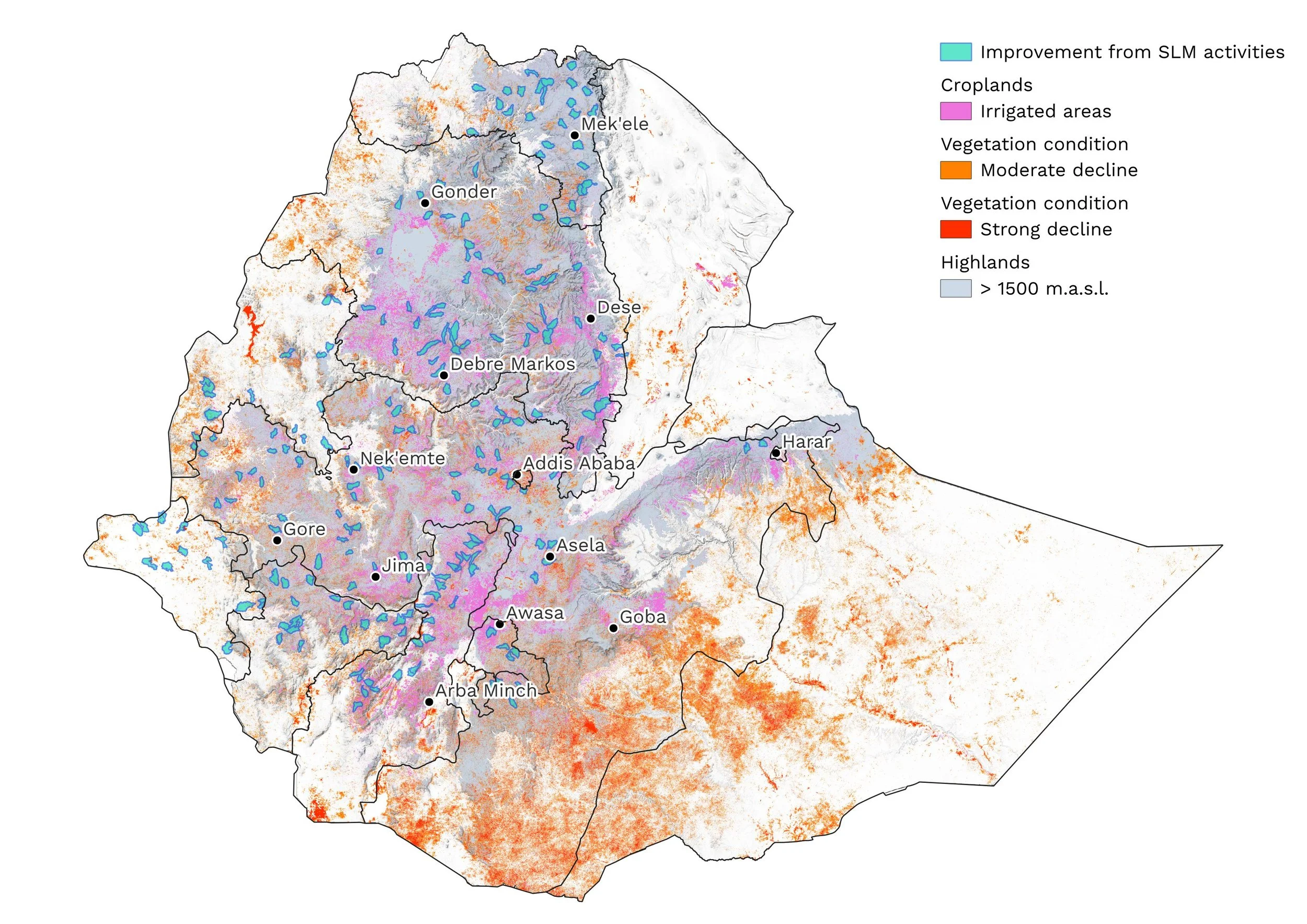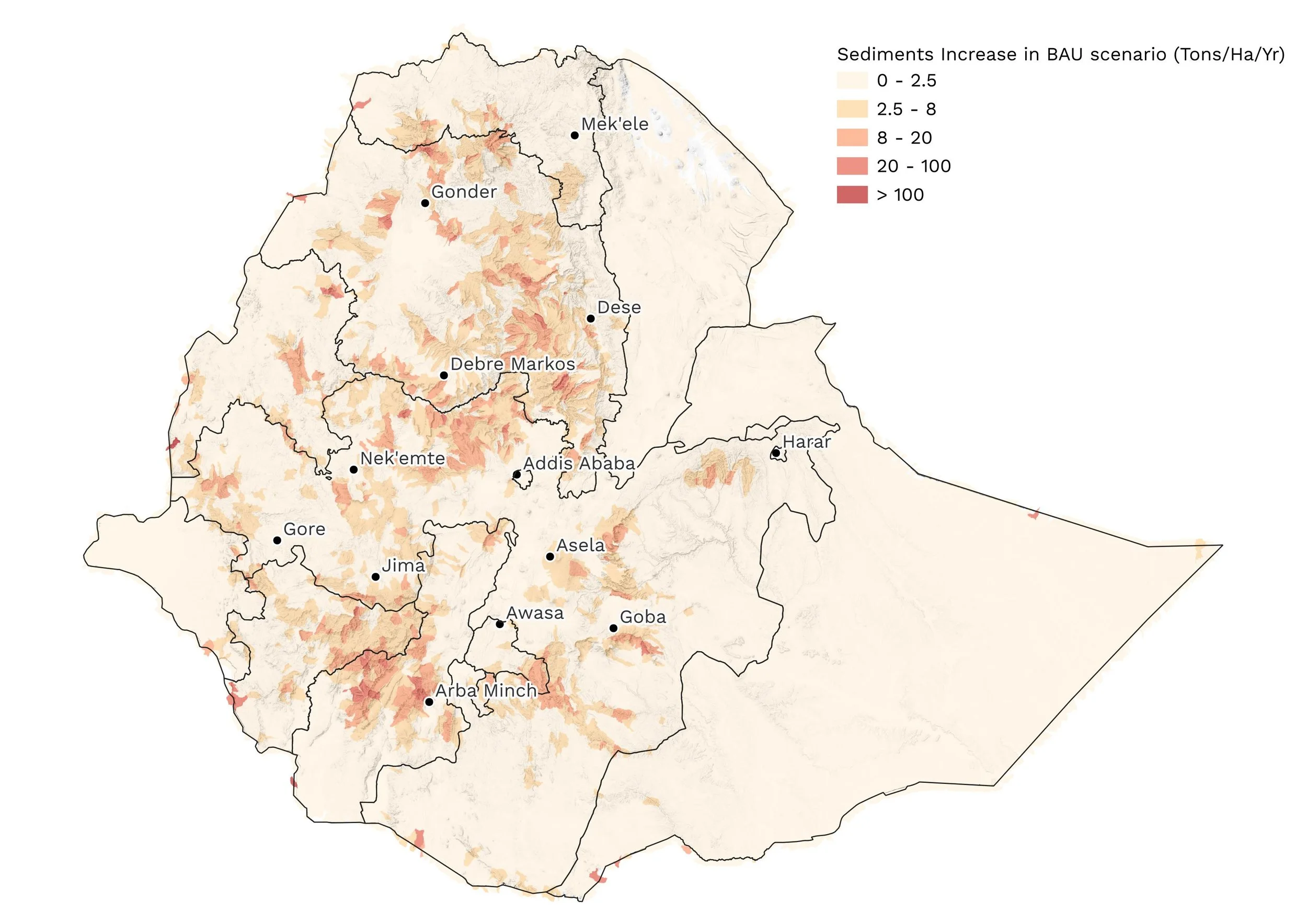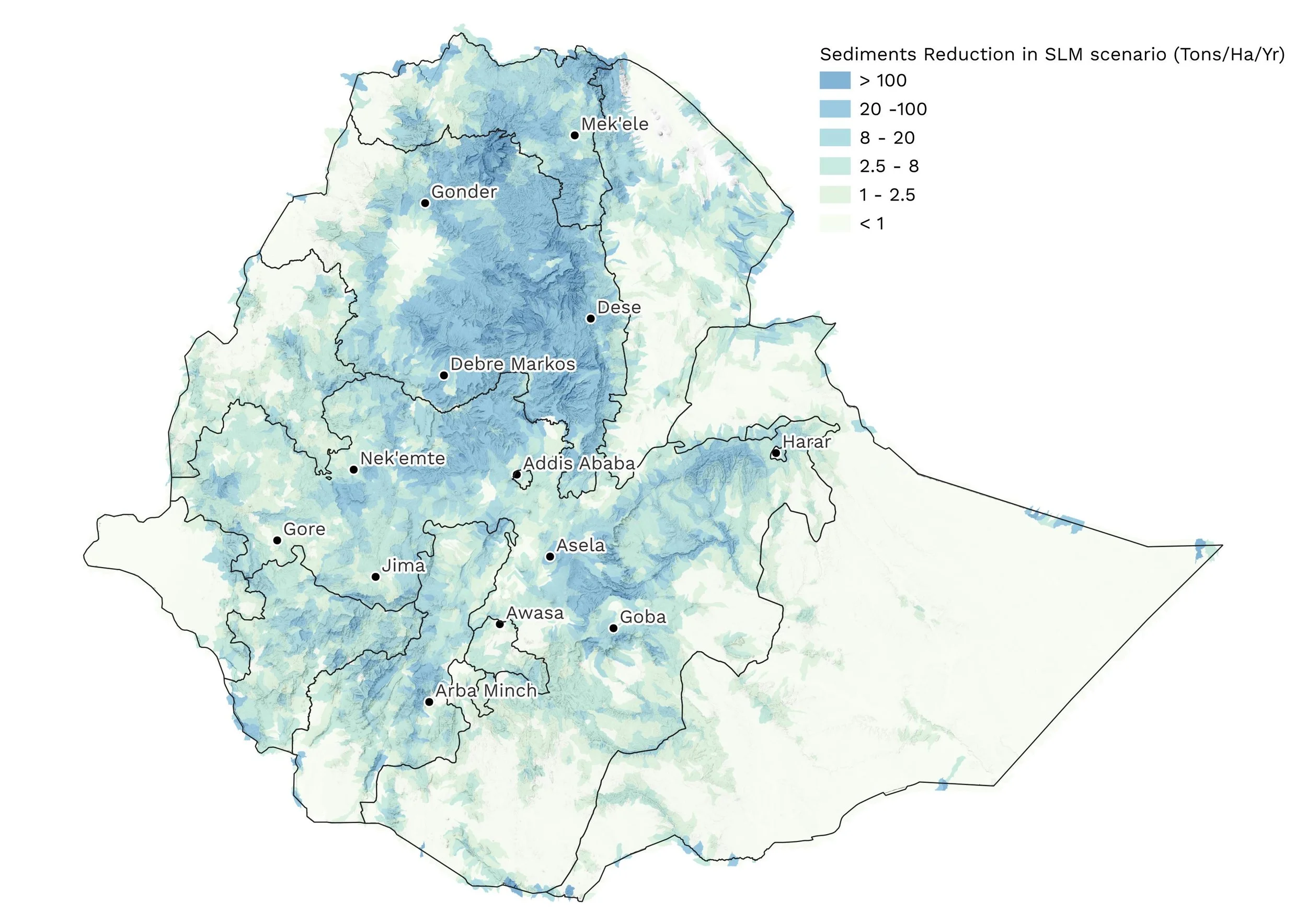Prioritizing Investments to Combat Land Degradation in Ethiopia
Project Overview
Situated in the Horn of Africa, Ethiopia is the second-most populous country in Sub-Saharan Africa and its land area spans more than 1 million square kilometers. Most of the population (~ 80%) still live in rural areas and depend on agriculture and livestock production for their livelihoods. Despite great strides in economic and human development in recent decades, the country still struggles with two interlinked crises: land degradation and climate change that cost the country an estimated $2.5 billion dollars annually in lost GDP.
The Government of Ethiopia – in collaboration with The World Bank – recognized that confronting these challenges would require a comprehensive strategy, one that harnesses sustainable land management practices (SLM) to address climate change, improve agricultural productivity, safeguard biodiversity, and enhance health and well-being. Further, the government aims to move away from restoration goals based only on the area impacted, in favor of performance-based programs that use data-driven methods to target areas with the highest potential for positive outcomes.
Researchers from NatCap Insights developed detailed ecosystem services models and an Investment Prioritization Tool that helps the government to identify target areas for investing in improved practices under their Strategic Investment Framework for Sustainable Land Management.
What We Did to Help
We evaluated trends in land degradation using satellite data to develop a picture of how Ethiopia’s landscapes could look in 25 years without further action taken to curb degradation in productive landscapes such as croplands, grazing lands, and forests. We then developed a series of ecosystem services models that quantify the costs of inaction on land degradation – in terms of increased erosion, decreasing capacity for water regulation and carbon storage – as well as the potential benefits of restoration action for these critical ecosystem services. We integrated the results to produce a database and an online interactive dashboard, and provided training for government staff along the way.
-
We analyzed trends in vegetation productivity to understand current trends and the potential for future decline in land condition.
-
We quantified the likely impacts of ongoing land degradation on carbon storage, erosion control, and water regulation. Analyzed the potential for restoration actions in croplands, grasslands, forests to offset these negative trends and enhance ecosystem services.
-
We created an online platform that enables the exploration of spatially explicit environmental data on ecosystem services and benefits, and supports building customized portfolios of priority investment areas with user-driven objectives and targets.
-
All of the above activities were done in close collaboration with local researchers and government staff. We held a series of in-person and virtual workshops throughout the 2-year project to validate data inputs and methods, and to build capacity for applying the models and tools. We also trained staff on how to modifying the tools to reflect updated data, priorities, and targets for SLM implementation.
What We Created
We assessed potential changes in Ethiopian vegetation health and productivity through 2030 based on 20-year trends in gross primary productivity; ongoing investments in afforestation, restoration, and sustainable land management; and planned expansion in irrigated agriculture.
Our results highlighted areas where vegetation health has declined (orange and red colors). Green areas are where investments in SLM are improving land condition.
Of particular note are improvements in the highlands, which received recent investments in SLM by the government of Ethiopia under programs including the World Bank-funded Climate Action Through Landscape Management (CALM) initiative. Our results also revealed new areas of landscape restoration priority in other parts of the country.
Building on these past trends, our analysis highlighted areas in the country likely to see the largest increases in soil loss and sedimentation from ongoing land degradation, if action is not taken.
They also revealed the places where investment in SLM will bring the greatest reduction in soil loss. Similar results were also produced for carbon storage and water regulation.
Finally, an Investment Prioritization Tool helps the government to identify watersheds with the highest returns on investment. Each watershed in the country is scored to reflect the integrated potential for SLM to improve ecosystem services.
An online dashboard tool allows the government to explore priority watersheds through a process of negotiation and dialogue with communities. The dashboard allows users to filter the selection of priority areas to meet different ecosystem services objectives or address climate adaptation priorities.
Project Impact
The Government of Ethiopia uses the models and Investment Prioritization Tool dashboard developed by our team to target ongoing investments in sustainable land management practices. The tool was used to recommend strategic priority areas for an update of Ethiopia’s Strategic Investment Framework for Sustainable Land Management (ESIF-4), a plan that will guide investment for the next 15 years. Our analysis of the costs of land degradation and opportunities for land restoration was also featured in the World Bank's Country Climate and Development Report for Ethiopia.






